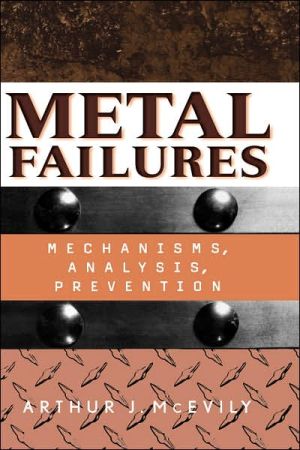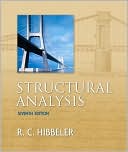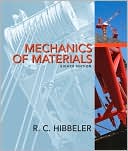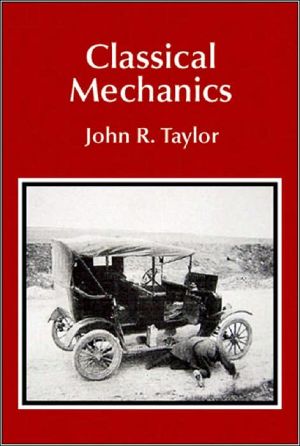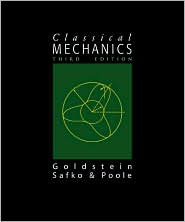Metal Failures
comprehensive coverage of both the "how" and "why" of metal failures\ Metal Failures gives engineers the intellectual tools and practical understanding needed to analyze failures from a structural point of view. Its proven methods of examination and analysis enable investigators to:\ * Reach correct, fact-based conclusions on the causes of metal failures\ * Present and defend these conclusions before highly critical bodies\ * Suggest design improvements that may prevent future failures\...
Search in google:
comprehensive coverage of both the "how" and "why" of metal failures Metal Failures gives engineers the intellectual tools and practical understanding needed to analyze failures from a structural point of view. Its proven methods of examination and analysis enable investigators to: * Reach correct, fact-based conclusions on the causes of metal failures * Present and defend these conclusions before highly critical bodies * Suggest design improvements that may prevent future failures Analytical methods presented include stress analysis, fracture mechanics, fatigue analysis, corrosion science, and nondestructive testing. Numerous case studies illustrate the application of basic principles of metallurgy and failure analysis to a wide variety of real-world situations. Readers learn how to investigate and analyze failures that involve: * Alloys and coatings * Brittle and ductile fractures * Thermal and residual stresses * Creep and fatigue * Corrosion, hydrogen embrittlement, and stress-corrosion cracking This useful professional reference is also an excellent learning tool for senior-level students in mechanical, materials, and civil engineering.
Metal Failures\ Mechanisms, Analysis, Prevention \ \ By Arthur J. McEvily \ John Wiley & Sons\ ISBN: 0-471-41436-0 \ \ \ Chapter One\ Failure Analysis\ I. INTRODUCTION\ Despite the great strides forward that have been made in technology, failures continue to occur, often accompanied by great human and economic loss. This text is intended to provide an introduction to the subject of failure analysis. It cannot deal specifically with each and every failure that may be encountered, as new situations are continually arising, but the general methodologies involved in carrying out an analysis are illustrated by a number of case studies. Failure analysis can be an absorbing subject to those involved in investigating the cause of an accident, but the capable investigator must have a thorough understanding of the mode of operation of the components of the system involved, as well as a knowledge of the possible failure modes, if a correct conclusion is to be reached. Since the investigator may be called upon to present and defend opinions before highly critical bodies, it is essential that opinions be based upon a sound factual basis and reflect a thorough grasp of the subject. A properly carried out investigation should lead to a rational scenario of the sequence of events involved in the failure as well as to an assignment of responsibility, either to the operator, the manufacturer, or the maintenance and inspection organization involved. A successfulinvestigation may also result in improvements in design, manufacturing, and inspection procedures, improvements that preclude a recurrence of a particular type of failure.\ The analysis of mechanical and structural failures might initially seem to be a relatively recent area of investigation, but upon reflection, it is clear the topic has been an active one for millenia. Since prehistoric times, failures have often resulted in taking one step back and two steps forward, but often with severe consequences for the designers and builders. For example, according to the Code of Hammurabi, which was written in about 2250 BC (1):\ If a builder build a house for a man and do not make its construction firm, and the house which he has built collapse and cause the death of the owner of the house, that builder shall be put to death. If it cause the death of a son of the owner of the house, they shall put to death a son of that builder. If it destroy property, he shall restore what ever it destroyed, and because he did not make the house which he built firm and it collapsed, he shall rebuild the house which collapsed at his own expense.\ The failure of bridges, viaducts, cathedrals, and so on, resulted in better designs, better materials, and better construction procedures. Mechanical devices, such as wheels and axles, were improved through empirical insights gained through experience, and these improvements often worked out quite well. For example, a recent program in India was directed at improving the design of wheels for bullock-drawn carts. However, after much study, it was found that improvements in the design over that which had evolved over a long period of time were not economically feasible.\ An example of an evolved design that did not work out well is related to the earthquake that struck Kobe, Japan, in 1995. That area of Japan had been free of damaging earthquakes for some time, but had been visited frequently by typhoons. To stabilize homes against the ravages of typhoons, the local building practice was to use a rather heavy roof structure. Unfortunately, when the earthquake struck, the collapse of these heavy roofs caused considerable loss of life as well as property damage. The current design codes for this area have been revised to reflect a concern for both typhoons and earthquakes.\ The designs of commonplace products have often evolved rapidly to make them safer. For example, consider the carbonated soft-drink bottle cap. At one time, a metal cap was firmly crimped to a glass bottle, requiring a bottle opener for removal. Then came the easy-opening, twist-off metal cap. These caps were made of a thin, circular piece of aluminum that was shaped by a tool at the bottling plant to conform to the threads of the glass bottle. If the threads were worn, or if the shaping tool did not maintain proper alignment, then the connection between cap and bottle would be weak and the cap might spontaneously blow off the bottle, for example, on the supermarket shelf. Worse than that, there were a number of cases where, during the twisting-off process, the expanding gas suddenly propelled a weakly attached cap from the bottle and caused eye damage. To guard against this danger, the metal caps were redesigned to have a series of closely spaced perforations along the upper side of the cap, so that as the seal between the cap and bottle was broken at the start of the twisting action, the gas pressure was vented, and the possibility of causing an eye injury was minimized. The next stage in the evolution of bottle cap design has been to use plastic bottles and plastic caps. In a current design, the threads on the plastic bottle are slotted, so that, as in the case of the perforated metal cap, as the cap is twisted the C[O.sub.2] gas is vented, and the danger of causing eye damage is reduced.\ Stress analysis plays an important role both in design and in failure analysis. Ever since the advent of the industrial revolution, concern about the safety of structures has resulted in significant advances in stress analysis. The concepts of stress and strain developed from the work of Hooke in 1678, and were firmly established by Cauchy and Saint-Venant early in the nineteenth century. Since then, the field of stress analysis has grown to encompass strength of materials, and the theories of elasticity, viscoelasticity, and plasticity. The advent of the high-speed computer has led to further rapid advances in the use of numerical methods of stress analysis by means of the finite element method (FEM), and improved knowledge of material behavior has led to advances in development of constitutive relations based upon dislocation theory, plasticity, and mechanisms of fracture. Design philosophies such as safe-life and fail-safe have also been developed, particularly in the aerospace field.\ In a safe-life design, a structure is designed as a statically determinant structure that is intended to last without failure for the design lifetime of the structure. To guard against premature failure, the component should be inspected at intervals during its in-service lifetime.\ In the fail-safe approach, the structure is designed such that if one member of the structure were to fail, there would be enough redundancy built into the structure that an alternate load path would be available to support the loads, at least until the time of the next inspection. (The use of both suspenders and a belt to support trousers is an example of a fail-safe, redundant approach.) Consideration must also be given to the spectrum of loading that a structure will be called upon to withstand in relation to the scatter in the ability of materials to sustain these loads. As indicated in Fig. 1-1, danger of failure is present when these two distributions overlap.\ In addition, new fields such as fracture mechanics, fatigue research, corrosion science, and nondestructive testing have emerged. Important advances have also been made in improving the resistance of materials to fracture. In the metallurgical field, these advances have been brought about through improvements in alloy design, better control of alloy chemistry, and improvements in metal processing and heat treatment. The failure analyst often has to determine the nature of a failure; for example, was it due to fatigue or to an overload? In many cases, a simple visual examination may suffice to provide the answer. In other cases, however, the examination of a fracture surface (fractography) may be more involved and may require the use of laboratory instruments such as the light microscope, the transmission electron microscope, and the scanning electron microscope.\ Many of today's investigations are quite costly and complex, and require a broad range of expertise as well as the use of sophisticated laboratory equipment. In some instances, the investigations are carried out by federal investigators, as in the case of the TWA Flight 800 disaster (center fuel tank explosion), where both the Federal Bureau of Investigation (FBI) and the National Transportation Safety Board (NTSB) had to determine if the cause of the failure was due to a missile attack, sabotage, mechanical failure, or an electrical-spark-ignited fuel tank explosion. The case of the Three Mile Island accident (faulty valve) involved the Nuclear Regulatory Commission (NRC), and the Challenger space shuttle disaster (O-ring) involved the National Aeronautics and Space Administration (NASA). Many investigations are also carried out by manufacturers to ensure that their products perform reliably. In addition, a number of companies now exist for the purpose of carrying out failure analyses to assist manufacturers and power plant owners, as well as to aid in litigation. The results of many of these investigations are made public, and thus provide useful information as to the nature and cause of failures. Unfortunately, the results of some investigations are sealed as part of a pretrial settlement to litigation, and the general public is deprived of an opportunity to learn that certain products may have dangers associated with them. A company may decide on the basis of costs versus benefits that is cheaper to settle a number of claims rather than to issue a recall. This policy can sometimes be disastrous, as in the case of the recent rash of tire failures. Another example involved a brand of cigarette lighter that repeatedly malfunctioned and caused serious burn injuries. It was only after some fifty of these events had occurred and the cases had been settled that the dangers associated with this item were brought to light in a public trial.\ An important outcome of failure analyses has been the development of building codes and specifications governing materials [the American Society for Testing and Materials (ASTM)], manufacturing procedures [the Occupational Safety and Health Administration (OHSA)], design [the American Society of Mechanical Engineers (ASME) Boiler and Pressure Vessel Codes, the Federal Aviation Administration (FAA), NASA, American Petroleum Institute (API)], construction (state and municipal codes), and operating codes (NASA, NRC, FAA). These codes and standards have often been developed to prevent a repetition of past failures, as well as to guard against potentially new types of failure, as in the case of nuclear reactors. Advances in steel making, nondestructive examination, and analytical procedures have led to a reduction of the material design factor (safety factor) for power boilers and pressure vessels from 4 to 3.5 (2). (Allowable stress values based upon the tensile strength are obtained by dividing the tensile strength by the material design factor.) Today, the reliability of engineered products and structures is at an all-time high, but this reliability often comes with a high cost. In fact, in the nuclear industry, compliance with regulations intended to maximize safety may be so costly as to warrant the taking of a reactor out of service. It is also important for manufacturers to be aware of the state of the art as well as the latest standards. The number of manufacturers of small planes has dwindled because of product liability losses incurred when it was shown that their manufacturing procedures did not meet the current state-of-the-art safety standards. To guard against product failures, a number of firms now are organized in such a way that failure analysis is a line function rather than a staff function, and a member of the failure analysis group has to sign off on all new designs before they enter the manufacturing stage.\ II. EXAMPLES OF CASE STUDIES IN FAILURE ANALYSIS\ A. Problems with Loads and Design\ 1. Problems with Wind Loadings The Tay Bridge was a 10,300 foot long single track railroad bridge built in 1878 to span the Firth of Tay in Scotland (3). A portion of the bridge consisted of 13 wrought iron spans, each 240 feet in length and 88 feet above the water, which were supported by cast iron piers. On the fateful day of December 28, 1879, a gale developed with wind speeds up to 75 mph. That evening a passenger train, while making a scheduled crossing, plunged into the Firth, together with the 13 center spans, and 75 passengers and crew members lost their lives.\ The subsequent investigation revealed that a major cause of the disaster was that the gale force winds produced lateral forces on the passenger cars that were transmitted to the bridge structure and led to its collapse. Such wind loading had not been properly taken into account in the design stage. This disaster underscored the obvious fact that all potential loading conditions must be considered in order to design safe and reliable structures.\ Today, we are much more aware of the importance of wind loading in structural design. Nevertheless, from time to time, problems still arise. For example, the Citicorp Tower in New York City was built in 1977 in accord with the building code, which required calculations for winds perpendicular to the building faces. However, this was a unique structure in that a church occupies one corner of the building site, and the CiticorpTower is built over and around it. In 1978, it was discovered that the building was unstable in the presence of gale-force quartering winds, that is, winds that come in at a 45° angle and hit two sides of the building simultaneously. The building was quickly reinforced to insure its safety in the event of all types of wind loading, and a potential disaster was averted.\ An instance where wind loading did result in a spectacular failure was that of the Tacoma Narrows suspension bridge, which failed in 1940 after only four months of service. The bridge, which connected the Olympic peninsula with the mainland of Washington, had a narrow, two-lane center span over a half mile in length. The design was unusual in that a stiffened-girder, which caught the wind, was used, rather than a deep open truss, which would have allowed the wind to pass through. The design resulted in low torsional stiffness and so much flexibility in the wind that the bridge was known as "Galloping Gertie." As the wind's intensity increased to 42 mph, the bridge's rolling, corkscrewing motion also increased, until it finally tore the bridge apart. The ultimate cause of the failure was the violent oscillations, which were attributed to forced vibrations excited by the random action of turbulent winds as well as to the formation and shedding of vortices created as the wind passed by the bridge.\ 2.\ \ Continues...\ \ \ \ Excerpted from Metal Failures by Arthur J. McEvily Excerpted by permission.\ All rights reserved. No part of this excerpt may be reproduced or reprinted without permission in writing from the publisher.\ Excerpts are provided by Dial-A-Book Inc. solely for the personal use of visitors to this web site. \ \
Preface.Introduction.Elements of Elastic and Plastic Behavior.An Introduction to Fracture Mechanics.Alloys and Coatings.Examination Methods.Brittle and Ductile Fractures.Thermal and Residual Stresses.Statistical Distributions.Creep.Fatigue.Defects.Environmental Effects.Flaw Detection.Crane Hooks, Coil Springs, Roller Bearings, Bushings and Gears.Concluding Remarks.Problems.
